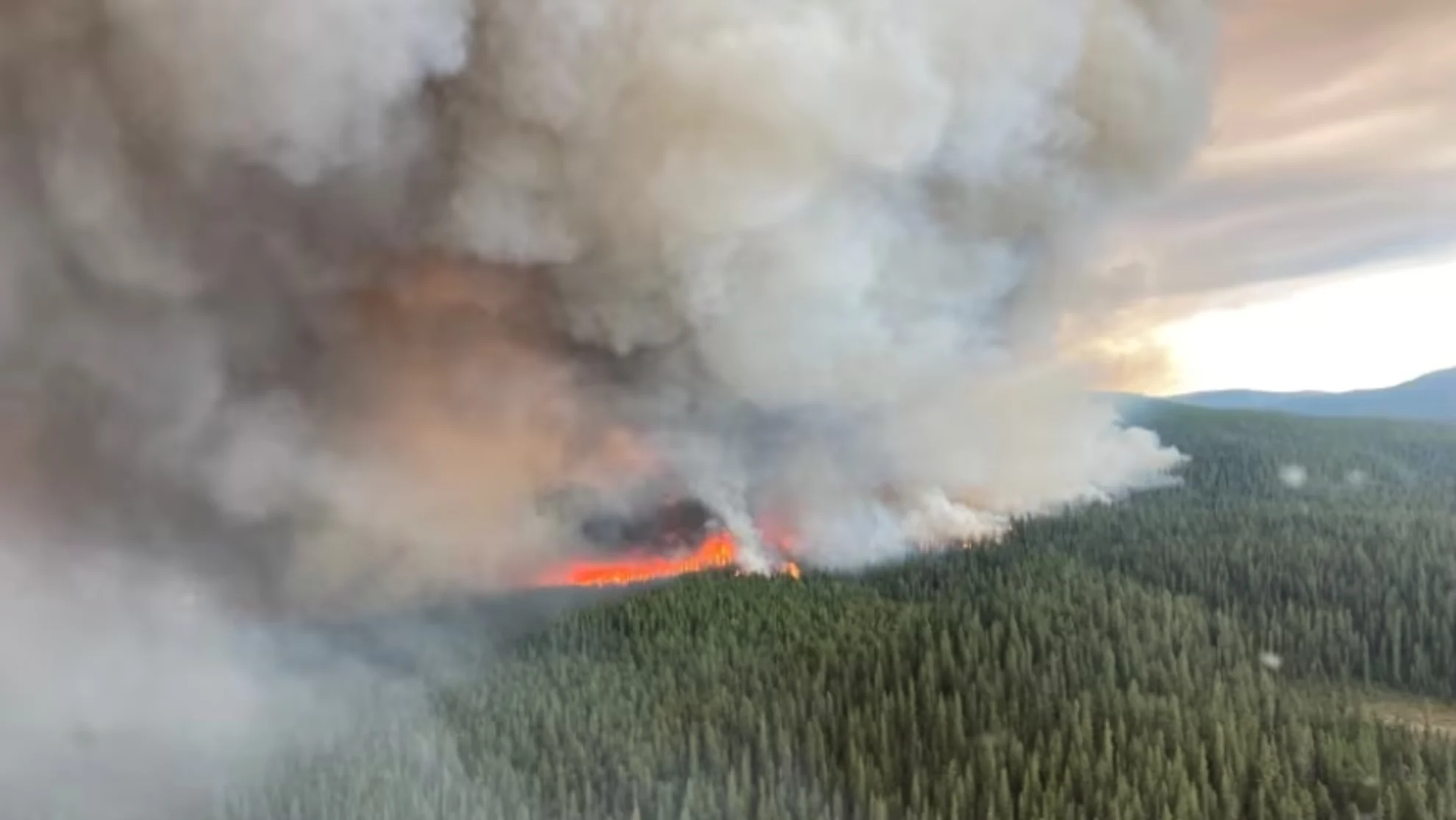
Northwest B.C. under stress as wildfire evacuations, state of emergency declared
Visit The Weather Network's wildfire hub to keep up with the latest on the active start to wildfire season across Canada.
The head of the B.C. regional district most affected by wildfires raging in northwestern B.C. is closely watching as their number and size grow.
Throughout June, wildfire activity in B.C. has primarily been centred in the province's northeast, where dozens of wildfires — including the largest ever recorded in the province — have kept crews busy and residents on high alert.
Now, fire activity has spread westward following a weekend that saw more than 24,000 lightning strikes across B.C. Coupled with extreme heat warnings, dozens of fire starts in the region have led to evacuation orders and alerts for hundreds of properties, including within the Regional District of Bulkley-Nechako (RDBN), with a population of around 40,000 people.

"We're currently sitting at nine alerts and seven orders across the regional district at this time, and that's being monitored hourly through the night and through the day," RDBN chair Mark Parker told CBC News Tuesday morning.
"We have fire starts, fires of notes and orders covering the entire regional district. It's not a small cluster."
Among the numerous fires in the region are the Powers Creek wildfire south of Smithers, and two wildfires just east of Burns Lake. The Pinkut Lake wildfire led to an evacuation order on Monday evening, as did the Parrot Lookout wildfire.
An evacuation alert means residents should prepare to evacuate their homes, possibly with little to no notice. An evacuation order means a resident should leave immediately.
Residents on edge
Nikki Skuce and her family, who live around eight kilometres away from Smithers' main street, have been on evacuation alert since Friday night.
The Powers Creek fire is visible from the town of around 5,300 residents. Skuce said it was encouraging to see aerial resources fight the blaze, but she still felt anxious.
"I didn't sleep very well all night," she said on Monday.
"Being on evacuation alert is really odd because you're just sort of constantly trying to become informed about how things are while also being prepared to leave at a moment's notice," she added.

The Parrot Lookout wildfire northeast of Francois Lake is among a number of wildfires in the Bulkley-Nechako region that have led to evacuation orders. (B.C. Wildfire Service/Twitter)
Smithers Mayor Gladys Atrill said there was a "different sense of anxiety" in the town, which has hosted wildfire evacuees from around the region in the past.
"Heightened sense of awareness, for sure, and I think a lot of gratitude for the people [who] have been working hard," she said when asked how the town was feeling.
Parker said that the widespread nature of the fires meant setting up evacuation centres was problematic, but he was heartened by the compassion shown by residents helping others in the region.
"I can't really stress that enough how much it means to see them helping each other out," he said.
State of emergency in Stikine
B.C. Emergency Management Minister Bowinn Ma said at a news conference earlier on Monday that about 156 people were under evacuation orders and 629 people under evacuation alerts across the province.

A firefighter conducts fire suppression around the perimeter of the Donnie Creek fire, which is now bigger than all of Prince Edward Island. The director of operations at the B.C. Wildfire Service said that more resources were being requested to deal with the blazes. (B.C. Wildfire Service)
She also announced a provincial state of emergency in Stikine, an unincorporated region north of Bulkley-Nechako covering approximately 118,664 square kilometres, so leaders can issue evacuation orders and travel restrictions as needed.
Province seeks help from outside B.C.
On Monday, Parker complained of resources being stretched thin and urged the province to do more to support the region.
"We're extremely thin. We're extremely resource-poor at the moment," he said at the time.
By Tuesday, he said more help had arrived in the form of people and equipment — and expressed sympathy for wildfire crews trying to manage what is shaping up to be an unprecedented season.
Cliff Chapman, director of provincial operations for the B.C. Wildfire Service (BCWS), acknowledged that resources had been stretched thin by the record-setting start to the fire season.
He said that the BCWS, as a provincial organization, had to station resources within each region in order to be prepared for new fires, but said the province was looking for firefighters from outside the province as the forecast calls for more heat and lightning.
"We have put in a significant order to the Canadian Interagency Forest Fire Centre," he told the news conference. "We have asked for somewhere in the neighbourhood of 400 additional resources.
He added that they are working with partners in the U.S. to secure more resources, "not just for the next five days, but really looking at it through the lens of the next two months."

Bowinn Ma, Minister of Emergency Management and Climate Readiness, speaks to media about the current wildfire and drought conditions on Monday. (Justine Boulin/CBC)
Currently, 160 firefighters from the U.S. and Mexico are working to battle blazes across B.C.
Chapman urged residents to watch themselves while in the backcountry and respect fire prohibitions.
"We cannot afford to have a preventable fire occur in the province,'' he said. "We are asking the globe for help. We cannot afford to have human-caused fires in B.C."
WATCH: Wildfires this year could put the brakes on stormy weather
Thumbnail courtesy of BC Wildfire Service via CBC.
The story was written by Akshay Kulkarni and published for CBC News. It contains files from Randi-Marie Adams and Betsy Trumpener.










